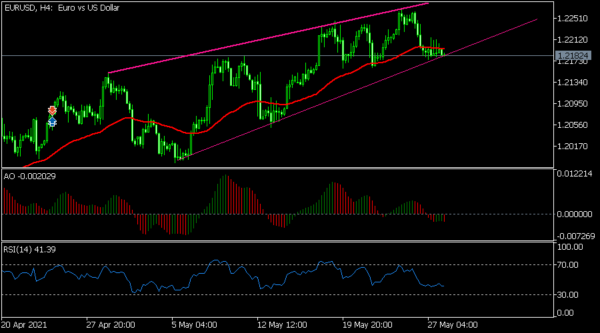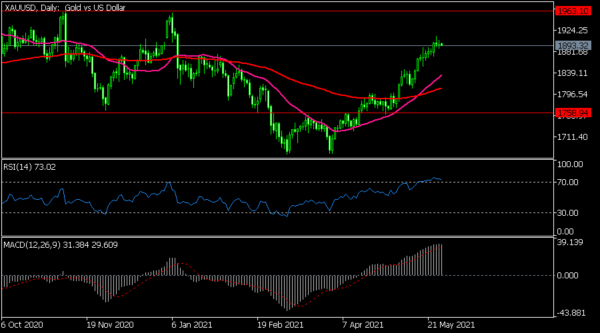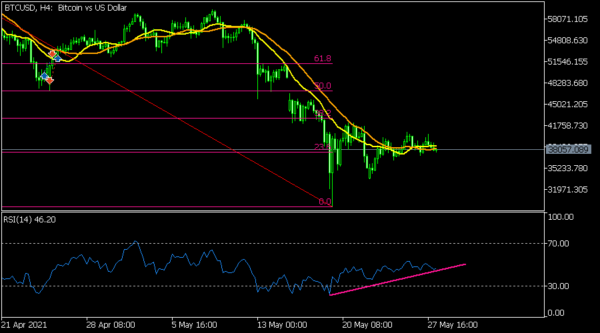The US dollar was little changed in the American and Asian sessions after a data dump in the United States. According to the statistics agency, the economy expanded by 6.4% in the first quarter, a lower reading than the previous 6.5%. The GDP price index rose by 4.3%, better than the previous 4.1%. Further data showed that durable goods orders declined by 1.3% while core durable goods rose by 1.0%. Meanwhile, the country’s initial jobless claims numbers fell from 444k to 406k last week. That was the best performance since the pandemic started. Pending home sales declined by 4.4%. Later today, the currency will react to the personal spending, income and personal consumption expenditure data from the United States.
The Japanese yen eased against the US dollar in the morning session after relatively weak data from Japan. According to the statistics agency, the overall unemployment rate increased from 2.6% in March to 2.8% in April as the country continued its state of emergency. Still, the rate is substantially better than in other countries like the United States and the UK. The jobs to applications ratio declined from 1.10 to 1.09 in April. Further, the headline consumer price index (CPI) declined by 0.4% in May. Therefore, a combination of a high unemployment rate and low inflation means that the BoJ will take more time to start tightening.
In Europe, the European Commission will publish the latest business and consumer confidence data. These numbers are usually important because they influence business and consumer spending patterns. The Swedish statistics agency will publish the latest GDP, household lending, and retail sales numbers. In Norway, the statistics agency will deliver the latest unemployment data. Traders will keep their eyes on the cryptocurrency industry. After staging an impressive recovery, Bitcoin and Ethereum prices have stalled at the $40,000 and $2,800 levels.
EUR/USD
The EUR/USD was little changed in the overnight session as investors reflected on the latest US economic data. On the four-hour chart, the pair is at the lower side of the ascending channel and has crossed the 25-day moving average. The Awesome Oscillator, on the other hand, has moved below the neutral level while the Relative Strength Index (RSI) has dropped to 41. Therefore, a break below this support will signal that bears have prevailed. This, in turn, may see the price drop to the next support at 1.2150.
XAU/USD
The XAU/USD pair rose to a high of 1,1912 during the Asian session. This was the highest it has been in more than 4 months. On the daily chart, the pair moved above the 25-day and 15-day exponential moving averages while oscillators like the Relative Strength Index (RSI) and MACD rose. It is also approaching the important resistance at 1,963. It has also formed what looks like an inverted head and shoulders pattern. Therefore, the pair may keep rising as bulls target the next psychological level at 2,000.
BTC/USD
The BTC/USD pair is trading at 38,000, which is slightly below yesterday’s high of 40,000. On the four-hour chart, the pair is slightly above the 23.6% Fibonacci retracement level. It is also along the 23.6% Fibonacci retracement level while the Relative Strength Index (RSI) is creating a bullish divergence pattern. The pair will likely break out higher as bulls target the next resistance at 43,000.















